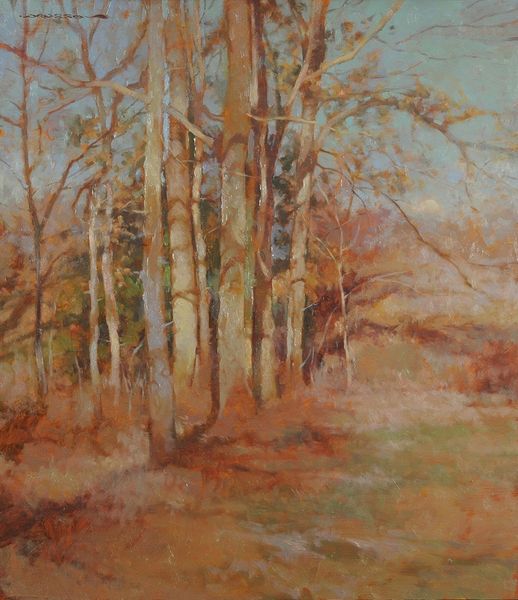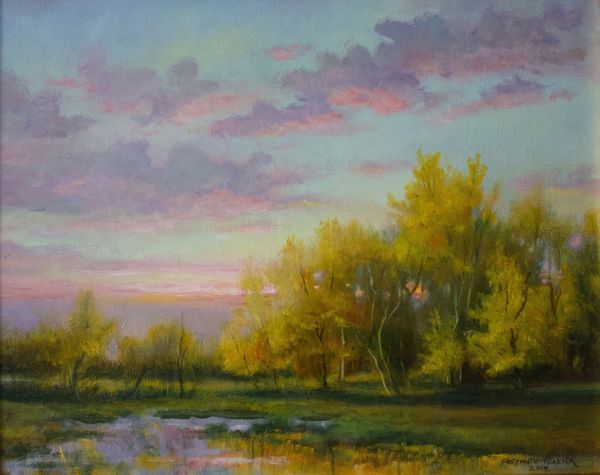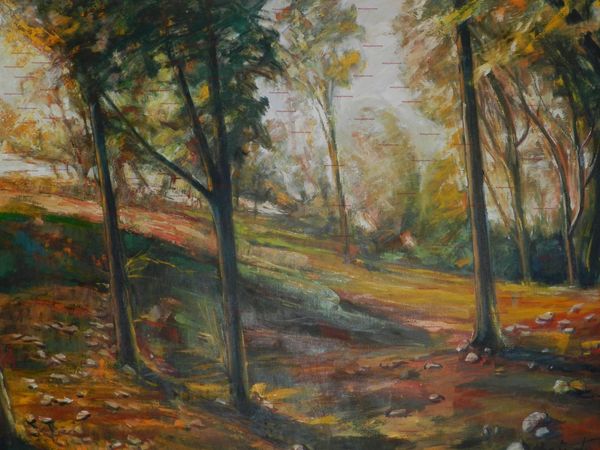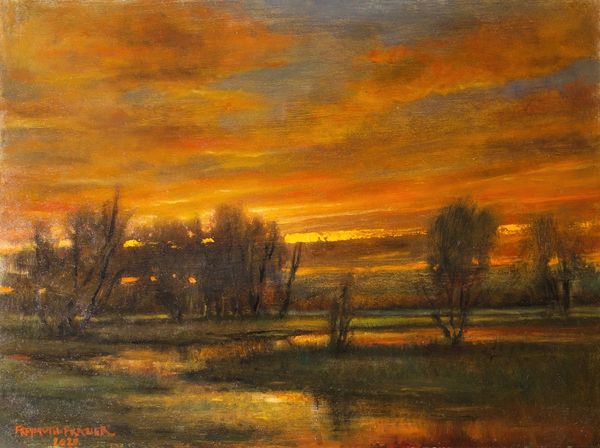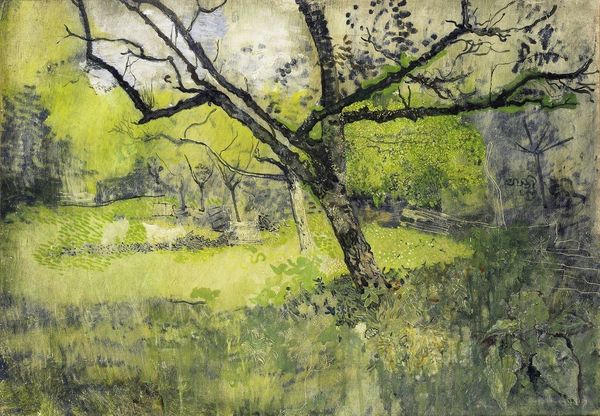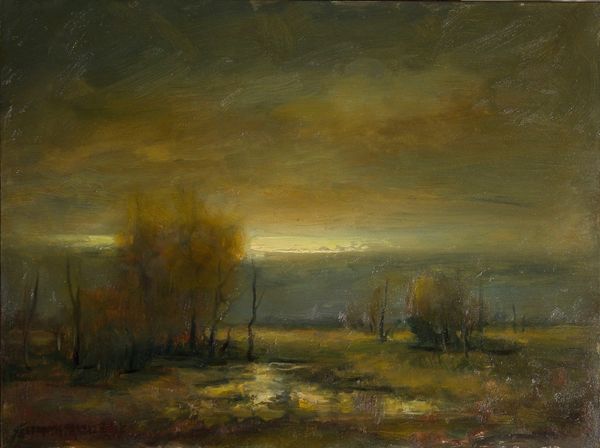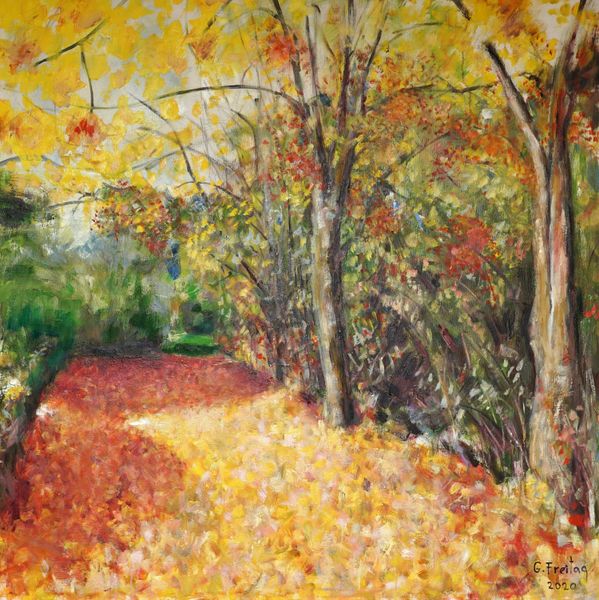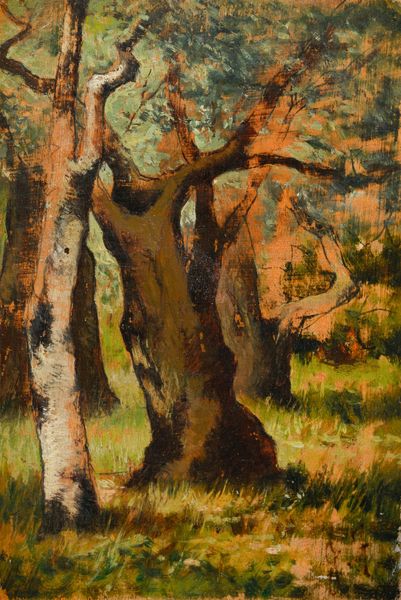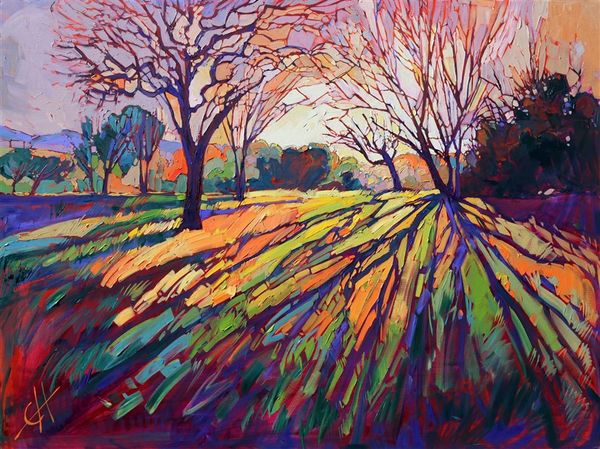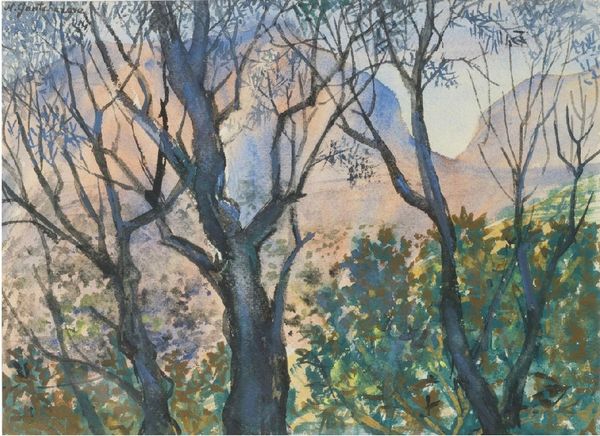
painting, plein-air, oil-paint, impasto
#
painting
#
plein-air
#
oil-paint
#
landscape
#
impasto
#
romanticism
#
realism
Copyright: Modern Artists: Artvee
Editor: We're looking at Joseph Lorusso's "Sentinel II," an oil painting. The thick brushstrokes and warm palette give it such a comforting, almost nostalgic feel. What compositional elements stand out to you? Curator: The impasto technique certainly commands attention. Consider how the textured surface interacts with the light; the artist meticulously built up layers of paint to create not only color but also a tactile experience. Notice how Lorusso used a series of analogous colors with very little contrasting hue, so value becomes the dominant formal characteristic to assess. Editor: So, it's less about the colors themselves and more about how light plays on them through the impasto? Curator: Precisely. The variations in value evoke different light sources. Consider, as well, how the skeletal structure of the tree branches contributes to an intricate interplay of line, shape and color. The spatial relationship between the central tree and the background forest creates depth, enhanced through nuanced brushwork, but not clear linear distinctions. Does the image have structural cohesion to you? Editor: It does, despite the lack of distinct lines, that color cohesion between foreground and background you noted help integrate it. What’s fascinating to me is the almost abstract quality created by that lack of distinction—without recognizable forms, we focus more on shape, texture, and tone to establish visual depth and narrative cues. Curator: And these choices have a pronounced effect on our interpretation of the landscape. We consider surface textures and colors through a structured, thoughtful organization. Editor: This close examination shifts how I engage with landscape paintings. It’s no longer just scenery, but a construction of shapes, textures, and color values all working together. Curator: Indeed. Formal analysis enriches our understanding and heightens our appreciation.
Comments
No comments
Be the first to comment and join the conversation on the ultimate creative platform.
